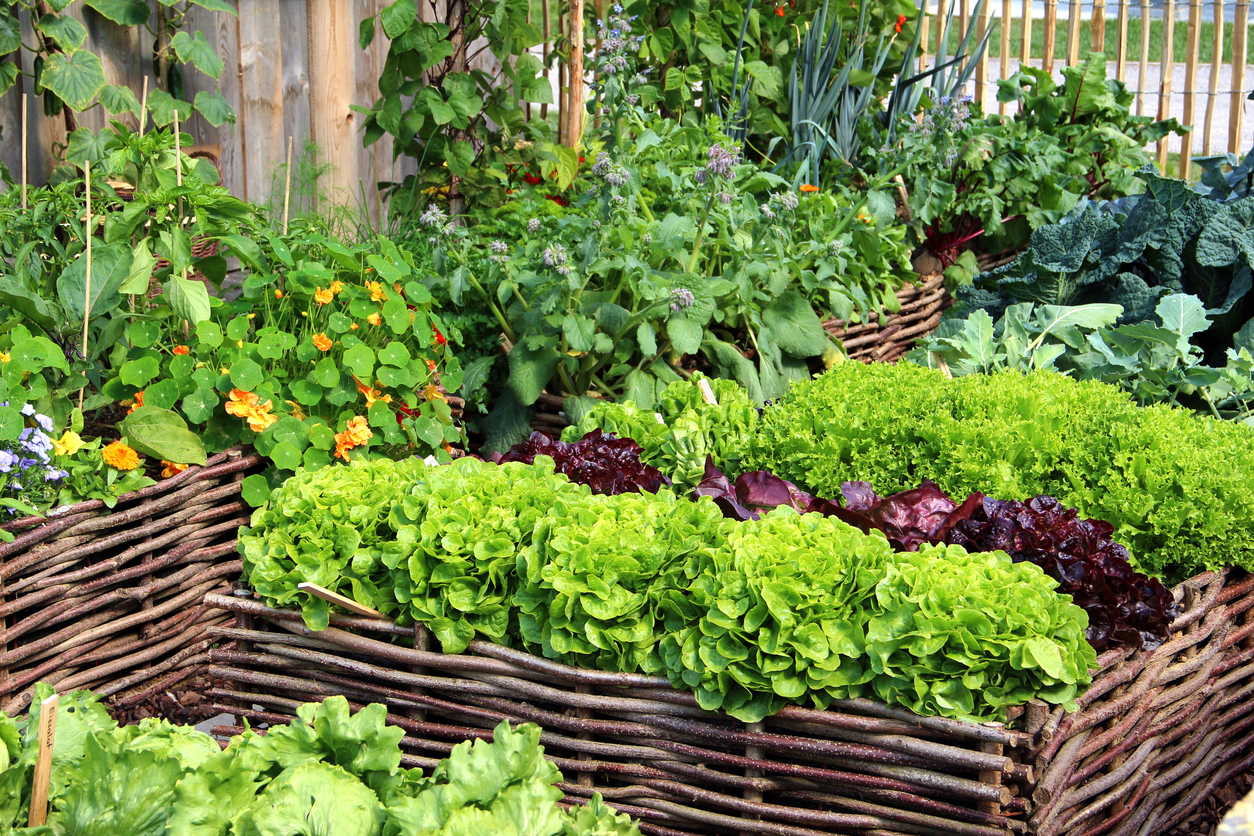When I was a bit younger, it wasn’t unusual to spend summers running through the sprinkler, letting the hose run over the slip ‘n’ slide, or just turning on the water to make mud pies. But the world is different today, and water conservation isn’t just the cool thing to do; it’s also mandated in some communities.
Even aside from environmental concerns and government edicts, as an adult, I’m also paying the water bill, and I can tell you, that’s enough to make anyone want to conserve water. I also love gardening, so I try my best to stop thinking about dollar signs whenever I water my cukes and carrots.
On the other side of that equation, I’ve also lost more than a few of my favorite veggies when I’ve gone out of town for several days, and my sprinkling timer malfunctioned. (Okay, maybe it was user error, but that’s another story.)
How to solve these problems? Self-watering garden bed ideas, of course! Hey, if I can conserve water, lower my water bill, and ensure that my garden won’t get dehydrated if my sprinkler system doesn’t work, I’m in!
Discover 7 top tips for growing, harvesting, and enjoying tomatoes from your home garden—when you access the FREE guide The Best Way to Grow Tomatoes, right now!
What is a self-watering garden bed?
Technically speaking, a self-watering raised bed or planter is one in which the plants are watered from underneath. You have a reservoir of water below the soil that is then wicked up to the plants as needed. I’m going to stretch the definition here just a bit to include one other self-watering garden bed idea that water from the surface. Don’t worry. This will all make sense in a minute.
These self-watering garden bed ideas are genius (or at least pretty neat)
The DIY self-watering raised bed
There are tons of blueprints, plans, and tutorials on building your own self-watering system, but the basics are all pretty much the same. The best part is, it’s not nearly as complicated as some sites would have you believe. Here is your quick-start guide:
- Line the bottom of your raised bed with a waterproof material, such as a pond liner.
- Get a length of flexible, perforated drain pipe and cover it in thin fabric to keep dirt from getting in. Lay the pipe along the bottom of your raised bed in a serpentine shape.
- At one end, insert a fill tube into the drainpipe, making sure it’s long enough that the other end will be accessible to insert a hose.
- Add a drain hole to the far end of the flex pipe and insert a small tube that will drain water outside your raised bed.
- Fill in the raised bed with planting mix, fill the flex pipe with water, until it is coming out of the drainage hole, and plant your garden.
- Check the soil regularly to make sure you don’t need to add more water. Eventually, you’ll get a feel for how often you need to add water, but I’d err on the side of caution until then.
- Watch your garden thrive!
The non-DIY self-watering raised bed
Do what I did: After using the DIY version for a year, I hired a lawn irrigation company to come in and professionally install some drip lines that tie into my lawn irrigation system. It was pricy but it’s much more permanent, and it’s fancy: it won’t turn on if it’s raining or has just rained, and I can turn it on via my phone. I know that’s super millennial of me, but this was end-game for me.
The non-DIY self-watering planter
Of all the self-watering garden bed ideas, this is undoubtedly the easiest. Just go to your favorite brick-and-mortar or online garden shop and buy one. Be warned; if you want a self-watering planter of any size, they can get expensive. Don’t be shocked when you see them in the $400 and up price range.
The Rain Barrel Drip System
If you wanted to stick to the exact definition, this should not be here with other self-watering garden bed ideas. However, if you want to cut down on your water consumption, this is one of the best things you can do. According to EPA estimates, saving rain runoff from your roof saves an average of 1,300 gallons during the summer.
Admittedly, the setup cost can be a little high, with most rain barrels running between $100 and $175, but it’s also one of the most environmentally friendly ways to water your garden. Just attach a drip irrigation hose to your barrel and let gravity do the rest.
Before you buy a barrel, however, be sure to check with your local or state environmental agency to see if they have any water conservation programs. For example, The Great American Rain Barrel Company has agreements with some municipalities to offer discounted rain barrels.
A self-watering system can save water, and it can certainly save you some worry.
Have you used a self-watering system? I’d love to hear about your experience in the comments.
Discover 7 top tips for growing, harvesting, and enjoying tomatoes from your home garden—when you access the FREE guide The Best Way to Grow Tomatoes, right now!
